the last Hallowe'en I was waulkin
October 31: Hallowe'en (Kail-Torches | Soul Cakes | Art + Resources)
The last Halloween I was waukin
My droukit sark-sleeve, as ye ken
His likeness cam up the house staukin,
And the very gray breeks o' Tam Glen!Robert Burns, “Tam Glen”
Welcome to Hallowe’en: gateway to Allhallowtide…the prologue of this brief but impactful season, though it tends to exist as an island unto itself in our modern experience.
I’m not here to say that older Hallowe’en traditions are ‘better’ - but I do believe that by having a dialogue both with liturgical traditions of bygone days, as well as a dialogue with our own preconceived notions and experiences, we might add depth and expand our awareness of this mysteriously spooky evening that the Church has gifted us.
To read a bit more about the season of Allhallowtide as a whole, please visit this post!
This dialogue that I’m aiming for isn’t about re-creating past celebrations as a museum-piece or mere curiosity (though there’s immense value in the field of living history museums) - it’s about encountering the past to help challenge and invigorate the habits to which we’re so accustomed in our modern lives. Whether we live in the country or the city or somewhere in between, I believe our perspectives can be illumined and expanded by the rhythms of faithful celebration lived out through historic rural Church life.
And Hallowe’en, the end of harvest and the threshold of winter, is a beautiful voice through which Christ can speak - precisely because this holiday is so filled with uncertainty & debate, it’s an invitation that begs us to ask questions, think creatively, and approach with humility and compassion. What a remarkable opportunity friction can provide, if we let it.
So…let’s light a kail-torch & explore a few ancient All Hallows’ Eve traditions together. As always - reach out with questions or thoughts!
Light shining in the darkness
Then, first an’ foremost, thro’ the kail,
Their stocks1 maun a’ be sought ance;
They steek their een, and grape an’ wale
For muckle anes, an’ straught anes.
Poor hav’rel Will fell aff the drift,
An’ wandered thro’ the bow-kail,
An’ pou’t for want o’ better shift
A runt was like a sow-tail
Sae bow’t that nightRobert Burns, “Halloween”
Although familiar pumpkin Jack-o-Lanterns illuminate Hallowe’en in modern day America, this vigil of Hallowmas was once lit by other torches reflective of the harvest season. One predecessor to the pumpkin lantern was a turnip (commonly, a rutabaga was used instead), but another tradition involved a hearty, leafy green that is a farmer’s year-round stand-by: the humble kale.
My husband, David, calls kale a “near-perfect vegetable” - it builds and creates food for an incredibly long season…at our latitude, around seven months a year, much of that time being rainy and cool. And when its season is over in the spring, it sends up kale raab - a flowering stalk, signaling the end of its life cycle.
The leaves of kale grow from buds at the top of the plant. When we harvest, we take its lower leaves, spurring the upward growth of the stalk and the budding of more leaves at the top.

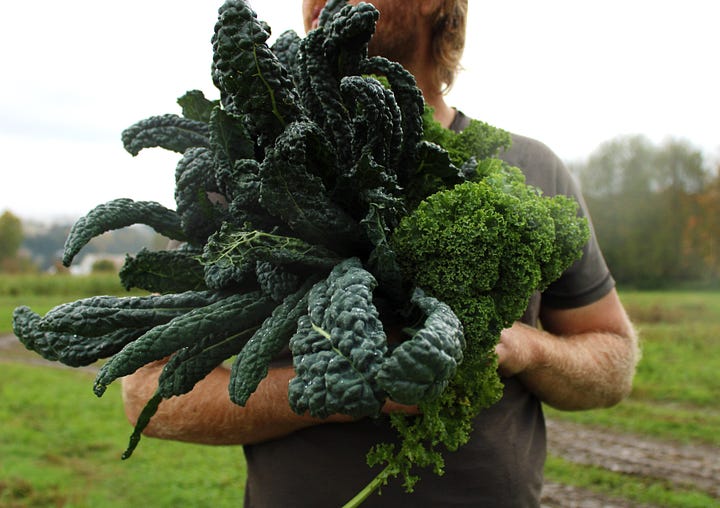
Early-season kale is low to the ground and full; but, by the time Hallowe’en has arrived, the kale has gone through multiple harvests and now has a tall stalk with a cupola of leaves at the very top. The “kailyard” at Hallowe’en is like a forest of miniature trees.
Fitting, then, that our forebears used that tall kale-stalk as a torch to light their way as they focused their attention to mortality during Allhallowtide.
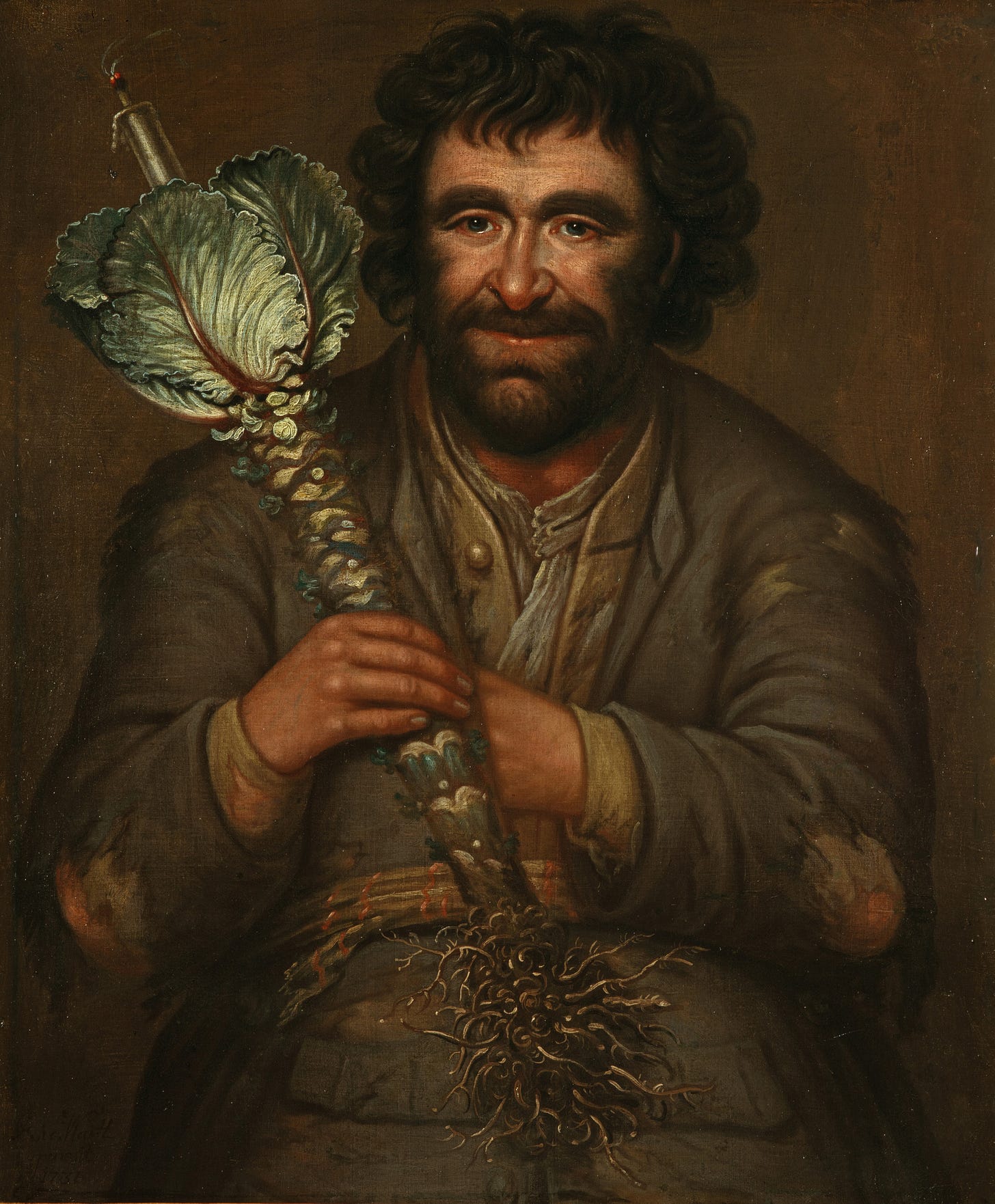
“This grinning man holds a kail stock with a burning candle stuck in the top. This helps identify him as the ‘fool’ or jester of a Scottish laird, who probably presided over Halloween festivities, such as those described in Robert Burns' poetry. Traditionally, unmarried men and women pulled up kail stocks to confirm the character of their future partner. A candle was then stuck into the end to make a torch. This portrait, painted in 1731, was possibly part of a series depicting Scottish clan members.”
Kale also figured into a variety of traditional Hallowe’en games & superstitions2 - games of guesswork & prediction, usually related to questions of future marriage and other relationships. It’s not terribly surprising that at this threshold of the dark half of the year, when the Church fostered an extra mindfulness toward the mystery of death, our rural ancestors explored not just the mystery of relationship with their deceased loved ones and spiritual forebears, but they also tried to make sense of the enigmatic unknowns in their living relationships, too.
Hallowe’en brought with it a great humbling - a call to examine our place among both the dead and the living. To think of ourselves not as islands, but as members in the greater cloud of witnesses.
Historic games of measuring kale height aside, this old Scottish folk tradition of lighting the kail-torch is such a beautiful example of the threads of celebration woven through the liturgical calendar: an awareness of the sacramentality of nature and the turning seasons, an attendant agricultural rhythm & heritage of stewardship, and the incarnational theology that speaks through it all. All of this, a beautiful sacramental tool…the accumulation of generations of wrestling, joy, sorrow, and tradition throughout Church history, helping to continually usher us into realignment with God and neighbor as we walk through the cycles of feasts and fasts year after year.
A light in the darkness - and the darkness does not overcome it.
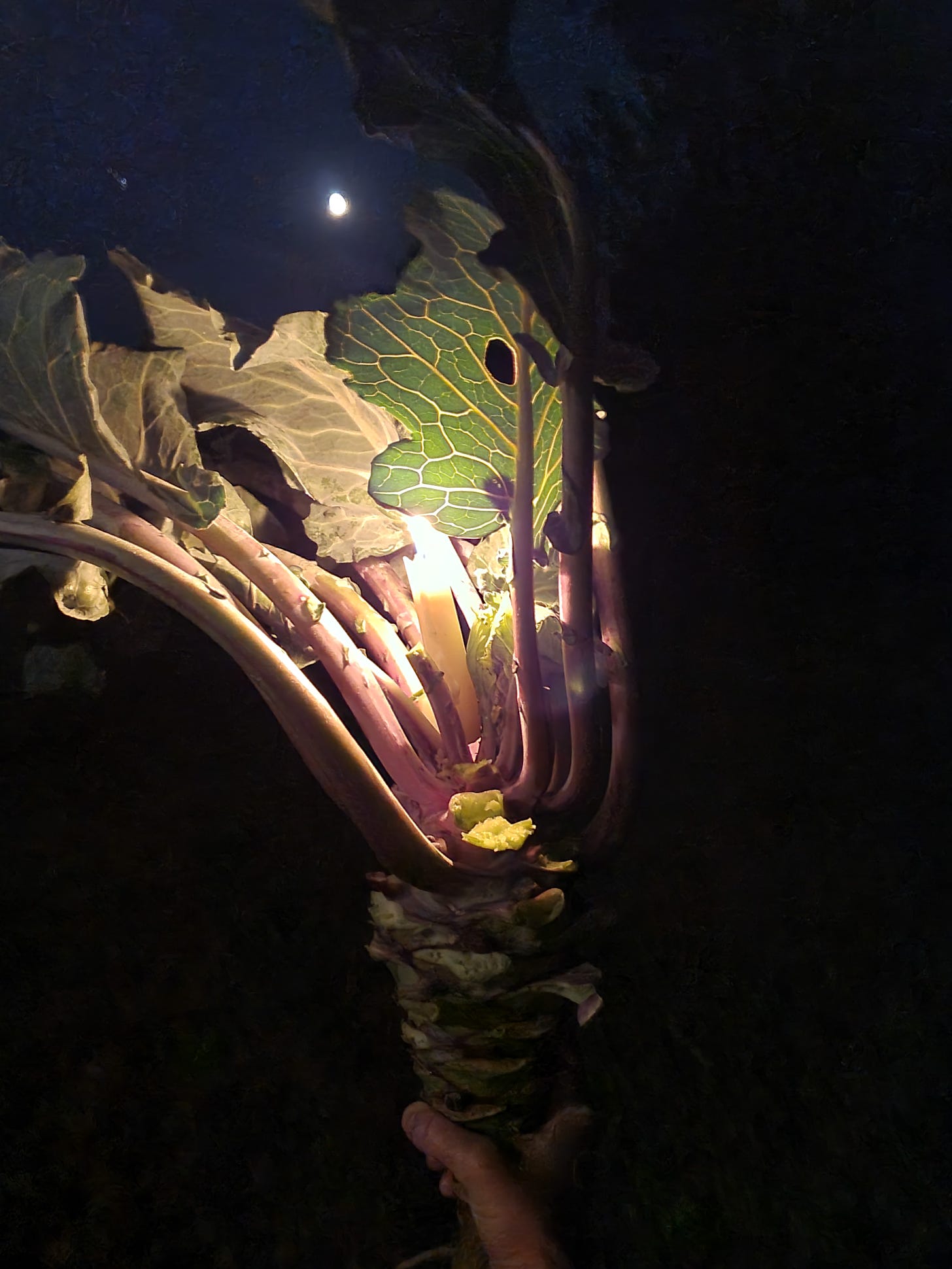
A lot of these old customs have gotten lost in the modern world, but they’re still there to be unearthed...and they bring with them an invitation to see the reverence in the seemingly mundane, and to experience first-hand the common thread that weaves us to the generations that have come before. What more fitting feast than that of All Hallows’ to embrace this?
Just like those gone before me, I’ll harvest kale on All Hallows’ Eve and let it light our vigil as we remember those saints and souls who have paved the path before us.
Extending our neighborhood
“Upon the second day of this Month, on which is commemorated The Feast of All Souls, it hath been a Custom, time out of mind, for good People to set on a Table-Board a high heap of Soul-Cakes, lying one upon another, like to the Shew-Bread in the Bible.
“They were in form about the bigness of a Two-Penny Cake: And every Visitant took one of them. And, there is an Old Rhyme, or Saying, which alludes to this, viz.
“ ‘A Soul-Cake!
A Soul-Cake!
Have mercy on all Christen Souls, for
A Soul-Cake!’ ”John Aubrey, Shropshire, ca. 1686
One of the hallmarks of modern Hallowe’en - trick-or-treating - may owe its lineage to the much older tradition of souling and related customs of guising and mumming. Though John Aubrey’s account (above) of souling mentions Soulmas (November 2nd)3 specifically, the practice of souling would occur on any of the three days of Hallowtide - beginning, of course, with the vigil.4
Dating back to the Middle Ages, soulers would go door to door, offering to sing and pray for departed loved ones from each household. In return, they would receive a soul cake (also called a soulmass cake). Similar to shortbread, these spiced soul cakes were marked with a cross, a visual reminder that they were alms.5
Though the souling songs varied a bit, this Cheshire version recorded in 1891 remains one of the most classic examples:
(Refrain)
A soul! a soul! a soul-cake!
Please good Missis, a soul-cake!
An apple, a pear, a plum, or a cherry,
Any good thing to make us all merry.
One for Peter, two for Paul
Three for Him who made us all.(Verse 1)
God bless the master of this house,
The mistress also,
And all the little children
That round your table grow.
Likewise young men and maidens,
Your cattle and your store;
And all that dwells within your gates,
We wish you ten times more.
(Refrain)(Verse 2)
Down into the cellar,
And see what you can find,
If the barrels are not empty,
We hope you will prove kind.
We hope you will prove kind,
With your apples and strong beer,
And we’ll come no more a-souling
Till this time next year.
(Refrain)(Verse 3)
The lanes are very dirty,
My shoes are very thin,
I’ve got a little pocket
To put a penny in.
If you haven’t got a penny,
A ha’penny will do;
If you haven’t get a ha’penny,
It’s God bless youCheshire Souling Song, recorded 1891 & published in 1893 by English folksong collector Lucy Broadwood
The souling tradition itself related to theological understandings of Purgatory6, which the Church wrestled with for centuries and didn’t codify until 1274 AD. Whatever one’s own stance on the afterlife or Purgatory is, the carving out of a day to hone our attention on the dead is a powerful witness to the profound neighborliness to which we’re called. A neighborliness that takes us out of our familiar, comfortable surroundings and extends us toward others.
These lyrical prayers & traditions developed as a communal way to remember the dead and pray for all those departed loved ones who have shaped our lives, whether known or unknown. A way to extend our hospitality even beyond the veil of death, offering our attendance and awareness to the departed - that even death would not separate us from our loving relationship with them and our concern for them.
That’s a vision of hospitality that really shifts my modern understanding in dramatic ways. Exchanging soul cakes for prayers for the dead brings with it this sobering sense that we all sit at the table of mortality together; death is our shared experience. Memento mori.
One of the earliest surviving recipes for soul cakes comes from Lady Elinor Fettiplace's 1604 compilation:
“Take flower & sugar & nutmeg, & cloves & mace & sweet butter & sack & a little ale barm, beat your spice & put in your butter & your sack, cold, then work it well all together & make it in little cakes & so bake them, if you will … you may put some saffron into them or fruit.”
Elinor Fettiplace’s Receipt Book, 1604; published as a collection, with annotations, by Hilary Spurling
Although Lady Elinor’s recipe isn’t explicitly titled “Soul Cakes” (her entry is simply dubbed “To Make Cakes”), later records of Soul Cake recipes are virtually identical.
Now, the tricky thing with recipes from this period is that they don’t provide measurements or temperatures, so I’ve done my best to translate Elinor’s recorded recipe into something that will work for us! Remember, recipes from this period won't be nearly as sweet as what we’re accustomed to these days.
Just a few notes:
Sack: Sack was a fortified wine (a distilled spirit like brandy was added to it) imported from Spain or the Canary Islands. It was a sweet wine that matured in wooden barrels. A modern equivalent would be a sherry.
Ale barm: This is yeasty froth leftover from the ale-making process (ale is a fermented malt beverage without hops, whereas beer has hops). The barm would be scooped out and used to leaven bread.
For both of these recipes, we used our stone-ground mill to grind wheat for the flour - so the main ingredient was farm-fresh.
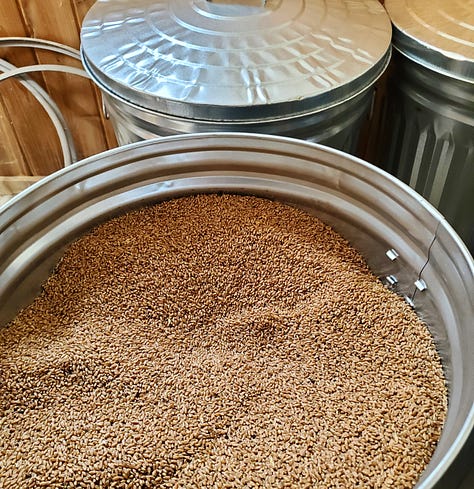
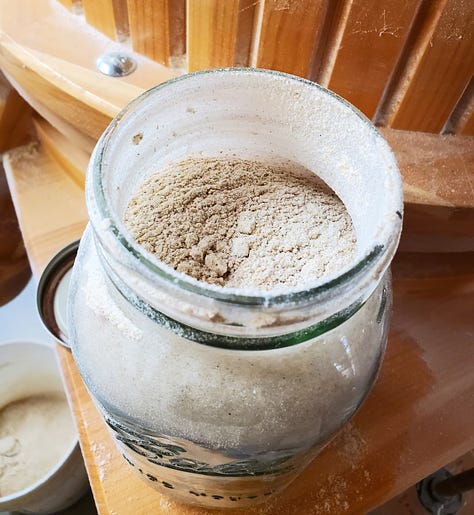
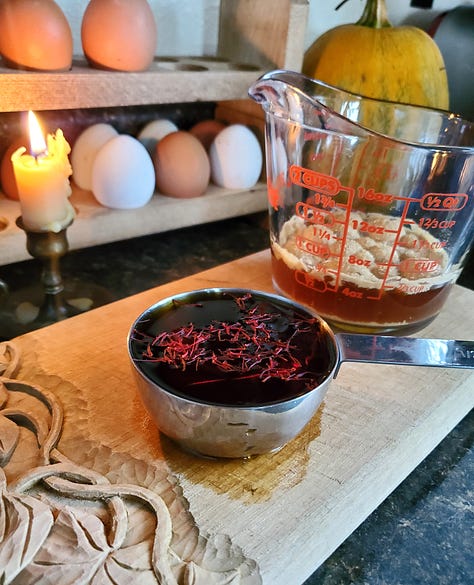
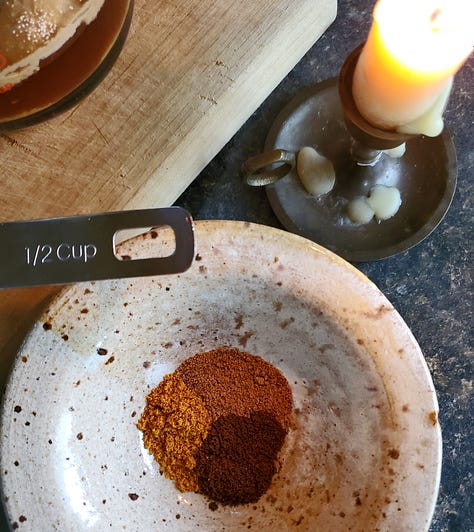

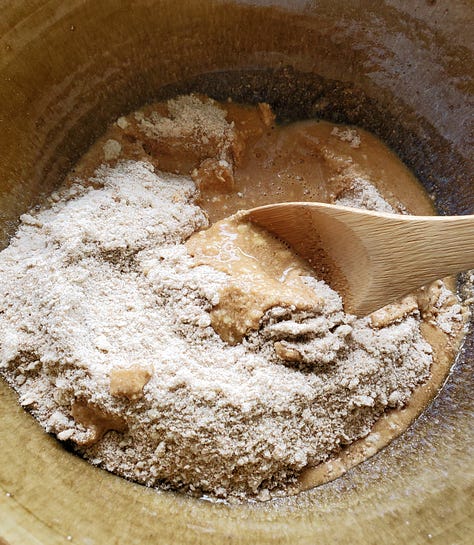
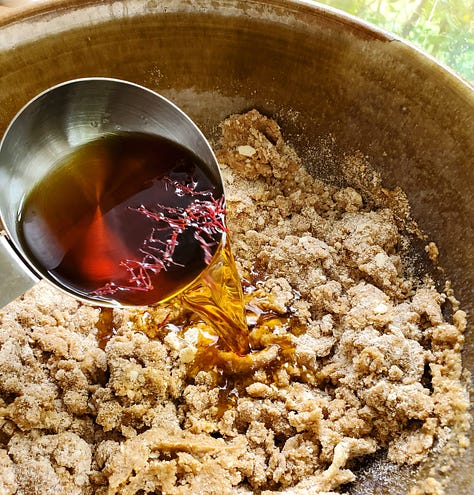
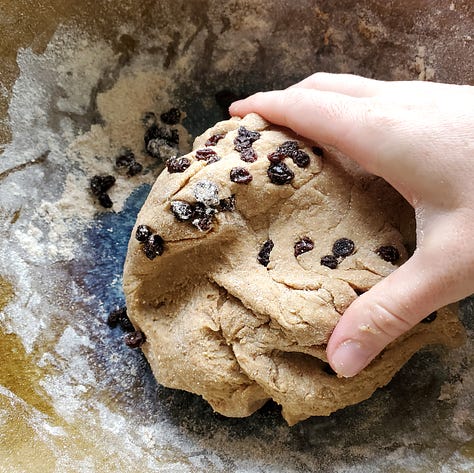
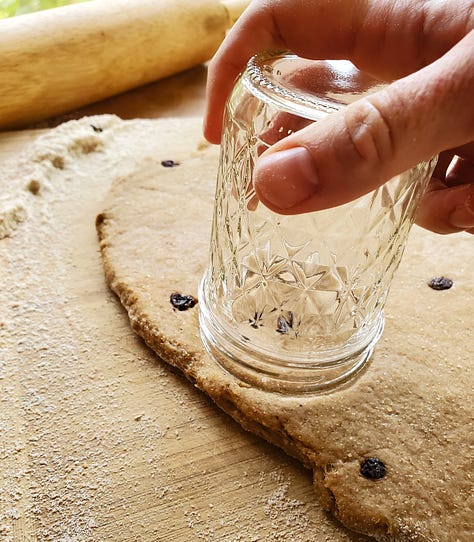

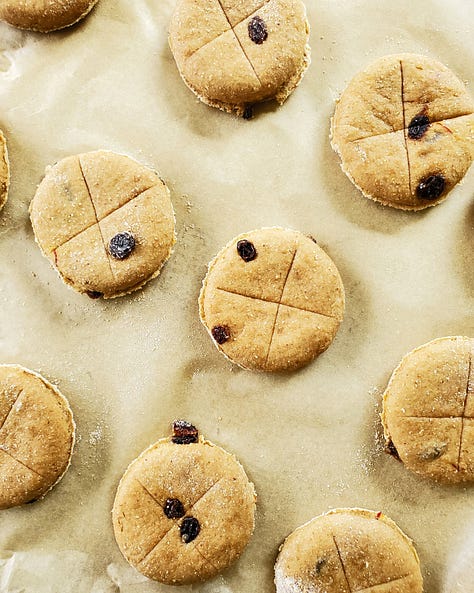
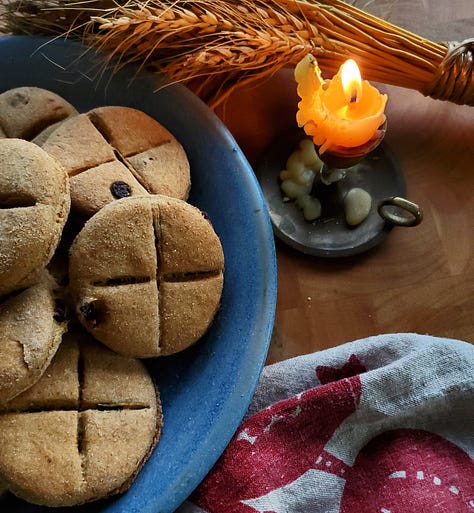
If you'd rather try a more modern version of Soul Cakes, fear not! I've provided an option for that, too - as well as some gift tags, in case you’d like to share some soul cakes with neighbors!
Art + Resources
All Hallows’ Eve Emblems
I have a few Hallowe’en treats available in my Etsy shop - a collage of emblematic Hallowe’en images, both as a print and as a sticker sheet!
A Kailyard Hallowe’en
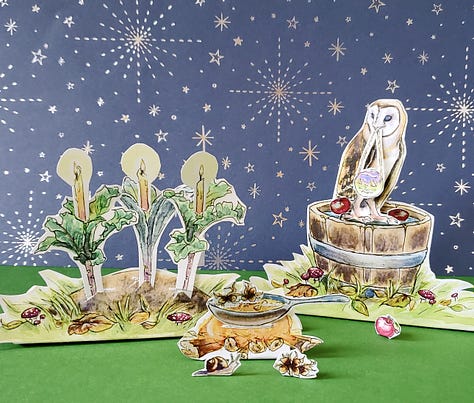
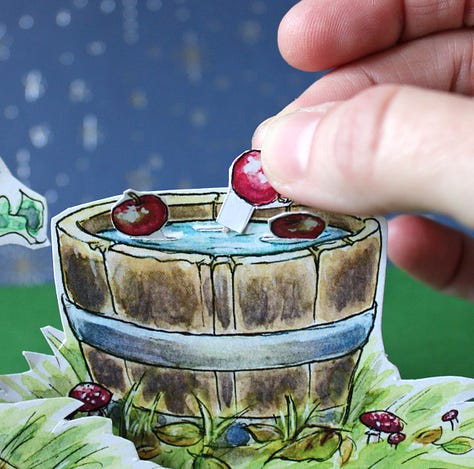
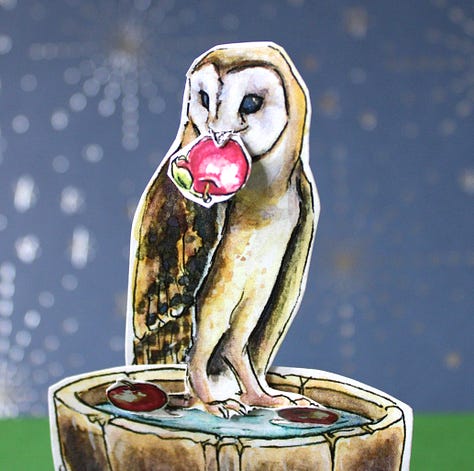
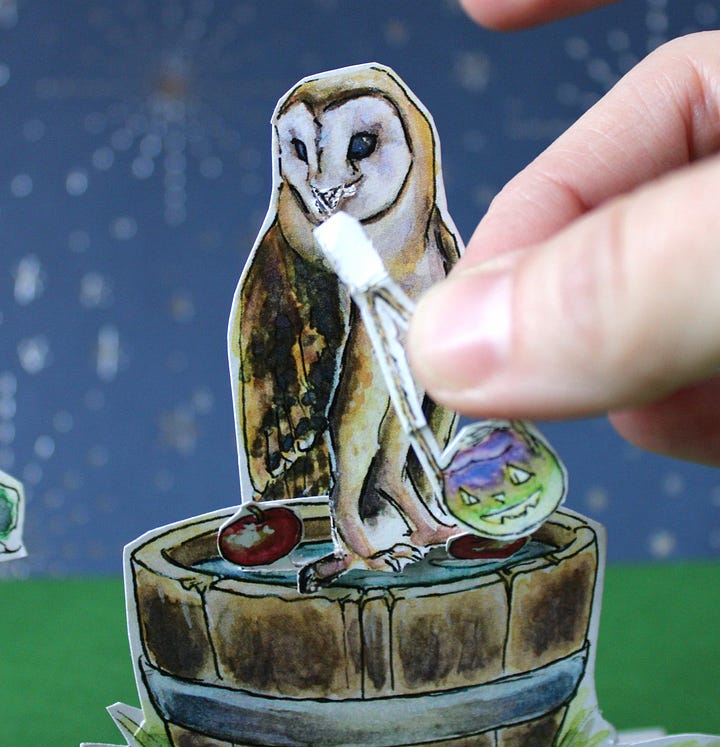

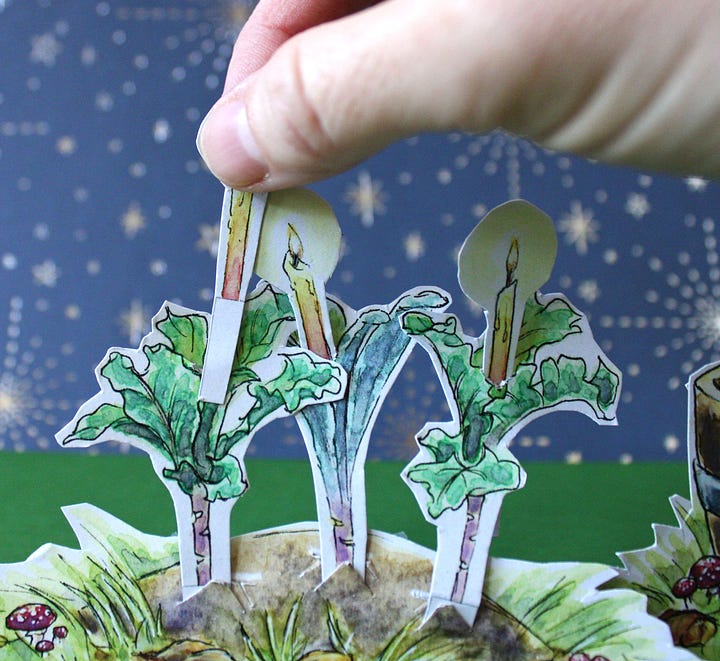
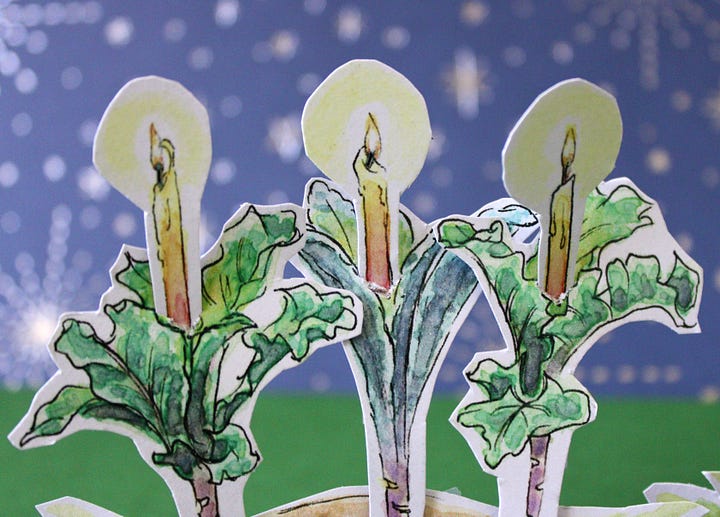
I also created a Hallowe’en printable paper scene, where Owl celebrates All Hallows’ Eve with historic rural traditions:
Apple Bobbing: Apples figured heavily in Hallowe’en celebrations, with this being their natural season - and apple-bobbing was one of many games that incorporated them.
Roasting Hazelnuts: Nuts, also readily available this time of year, were common in Hallowe’en recipes & games, so Owl can gather & roast some hazelnuts over the fire! (A little snail is included in this scene, too - folks used to notice the path a snail would take through the ashes of a fire, in an attempt to make sense of their world).
Kail-Torches: When the kale stalks are planted into the garden mound, you can “pull the kale” and slide a candle into each kale plant, making All Hallows’ Eve Kail-Torches!
Turnip Jack o’Lantern: Slide the tab from the turnip lantern under Owl’s beak so she can carry her lantern! Turnips and rutabagas were once the classic Hallowe’en lantern.
This printable scene is complimentary to my paid subscribers (here!), and is also available to purchase & download in my shop!
Liturgical Binder Sheets, Poetry, and more!

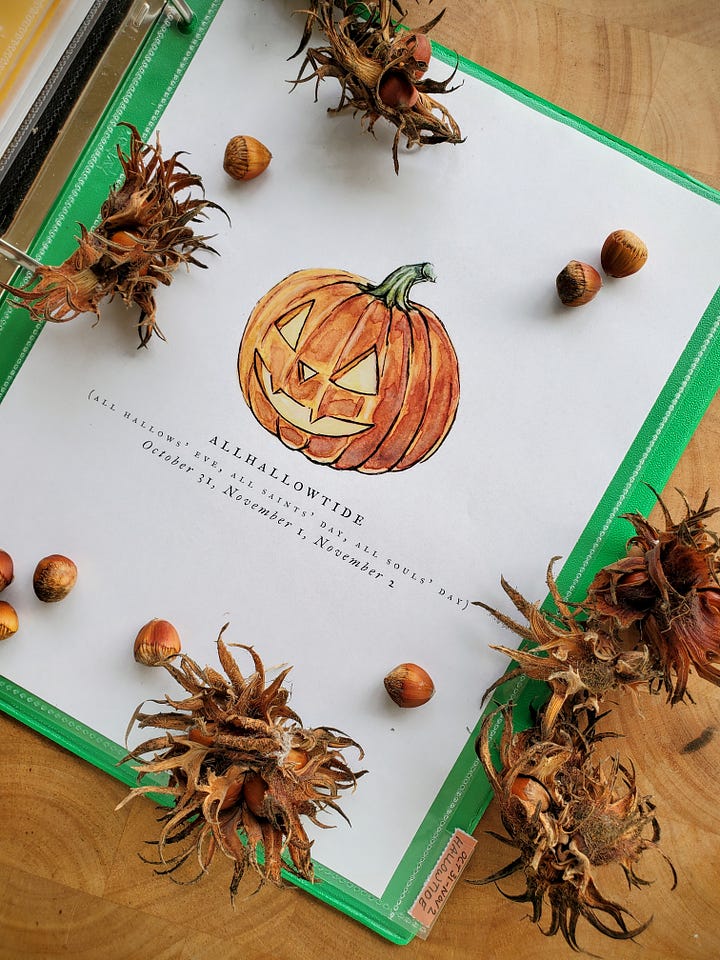
Do you keep a liturgical year binder? It can be a handy way to pull together all the resources you collect over the years, and I have some Hallowtide info sheets that are available for paid subscribers. We’re also fortunate to have a beautiful Hallowtide poem, written by my friend
- all available in the Scriptorium!This brief journey into Hallowe’en barely scratches the surface of a holiday that, for me, has become one of the most pivotal experiences of the Church year. There’s so much more to explore in these traditions - and through them, we can tangibly revisit our ancestors’ attempts at grappling with death, fear, and darkness…and we can bear witness to their faithful understanding that the light of Christ illuminates all of these places of darkness and confusion, making dark evenings warm and hospitable.
The harvest is over, the dark half of the year has arrived, but we’ll enter it bearing torches and linking arms across time with the departed who have shaped our lives and our faith.
Pax vobis,
Kristin
If you’d like to make a one-time donation, I have a PayPal Tip Jar - please know that I’m so grateful for your monetary support, which really does help me continue to do this work that I’m so passionate about!
For those who are able to support a monthly or annual paid subscription, I offer occasional new printables, extra posts, and access to my whole library of printables: the Scriptorium. I’m so grateful for your generosity, which helps to support my work through the purchase of additional books for research, art supplies, and more!
For more reflections and perspectives on the liturgical year, please visit Signs + Seasons: a liturgical living guild!
Robert Burns’ footnote: “The first ceremony of Halloween is pulling each a ‘stock,’ or
plant of kail. They must go out, hand in hand, with eyes shut, and pull the
first they meet with: its being big or little, straight or crooked, is
prophetic of the size and shape of the grand object of all their spells-the
husband or wife. If any ‘yird,’ or earth, stick to the root, that is ‘tocher,’
or fortune; and the taste of the ‘custock,’ that is, the heart of the stem, is
indicative of the natural temper and disposition. Lastly, the stems, or, to
give them their ordinary appellation, the ‘runts,’ are placed somewhere above
the head of the door; and the Christian names of the people whom chance brings
into the house are, according to the priority of placing the ‘runts,’ the
names in question. -R. B.”
Hallowtide is filled with a variety of superstitions, which I know can be challenging to encounter or perhaps feel simply quaint - for my reflections on this, please visit my previous Hallowtide post!
Baking soul cakes to distribute on Soulmas (November 2) would be a wonderful way to distinguish that day in Allhallowtide, but I’m dipping into soul cakes beginning with Hallowe’en in case you’d like to work on them throughout the triduum - the more cakes, the merrier, right?
Souling during Hallowtide also tended to be regional; locales that participated in the related customs of Catterning (on St. Catherine’s Day) or Clementing (on St. Clement’s Day) tended to accordingly not do souling during Hallowtide.
Alms take the form of food, money, or other items given in charity to those in need.
At the Second General Council of Lyon in 1274 AD, a doctrine on ‘Purgatory’ was recognized - defining it as a state of purification occurring after death.


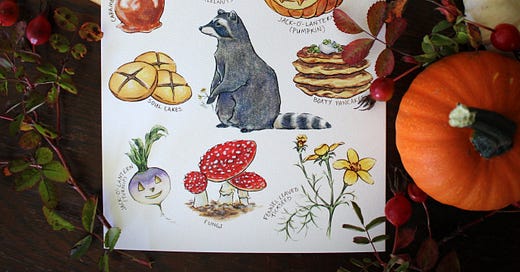



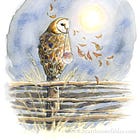


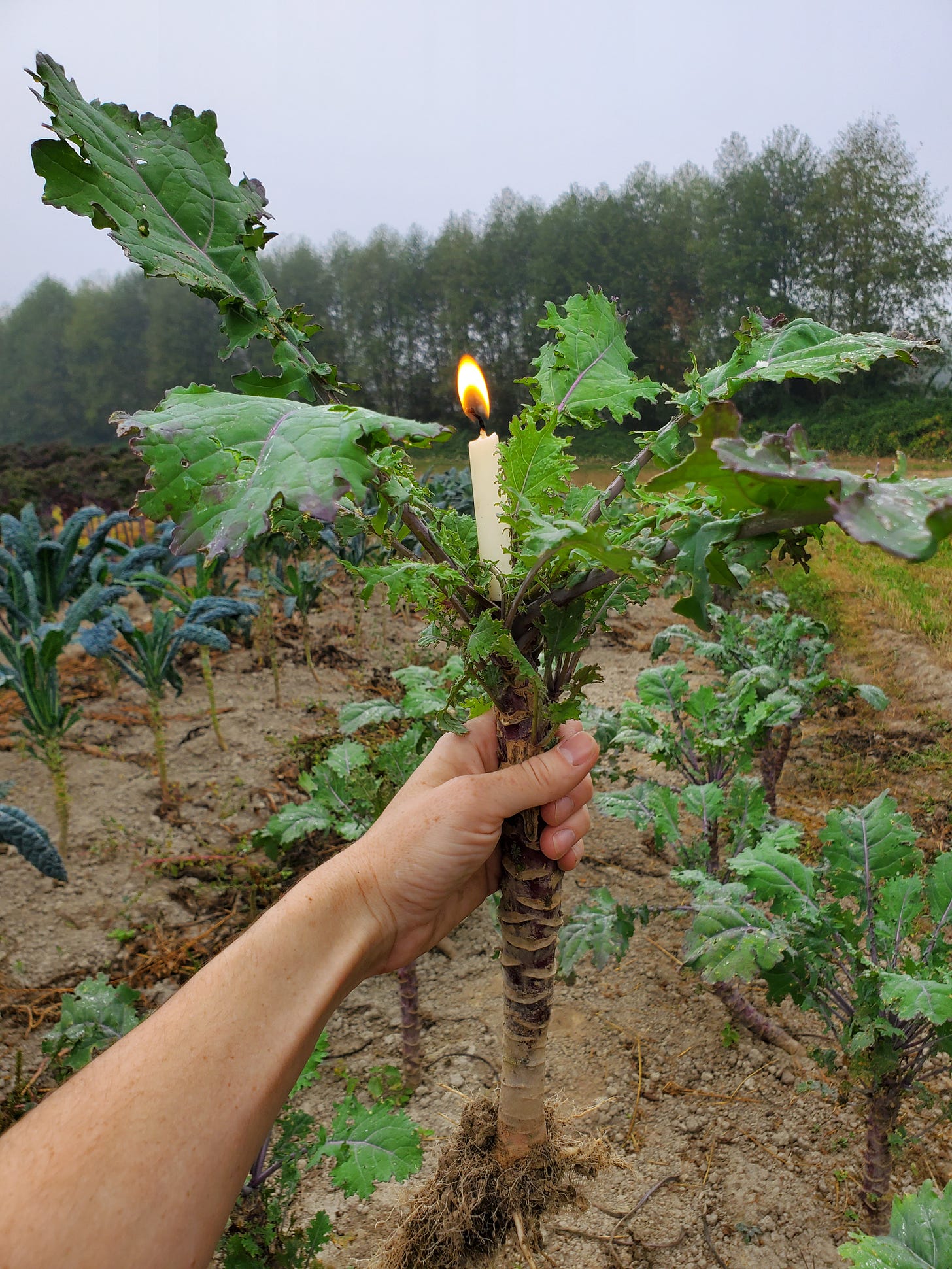
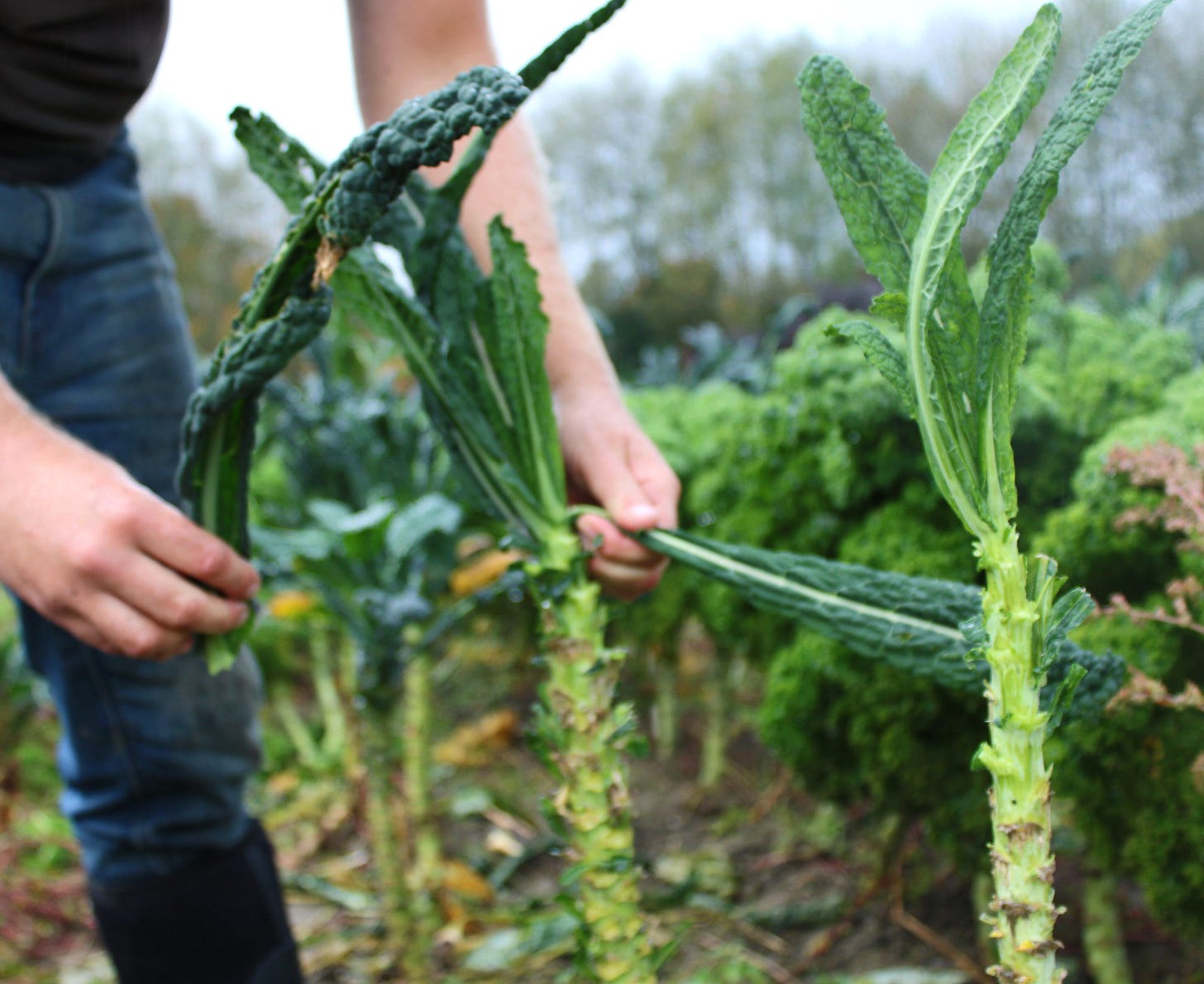
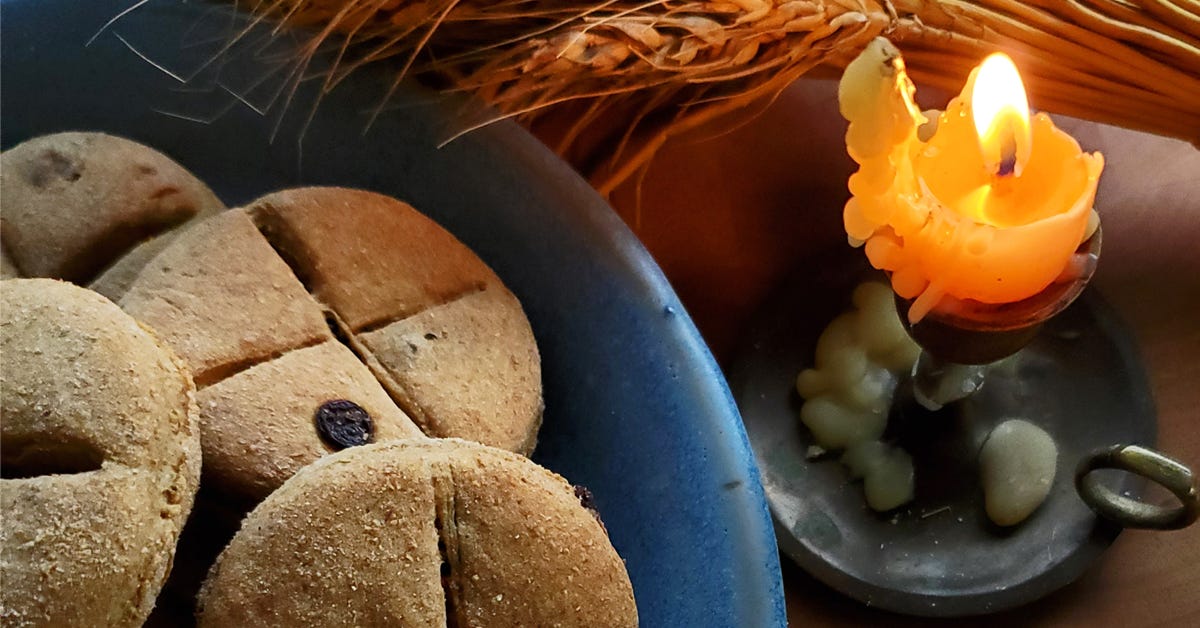
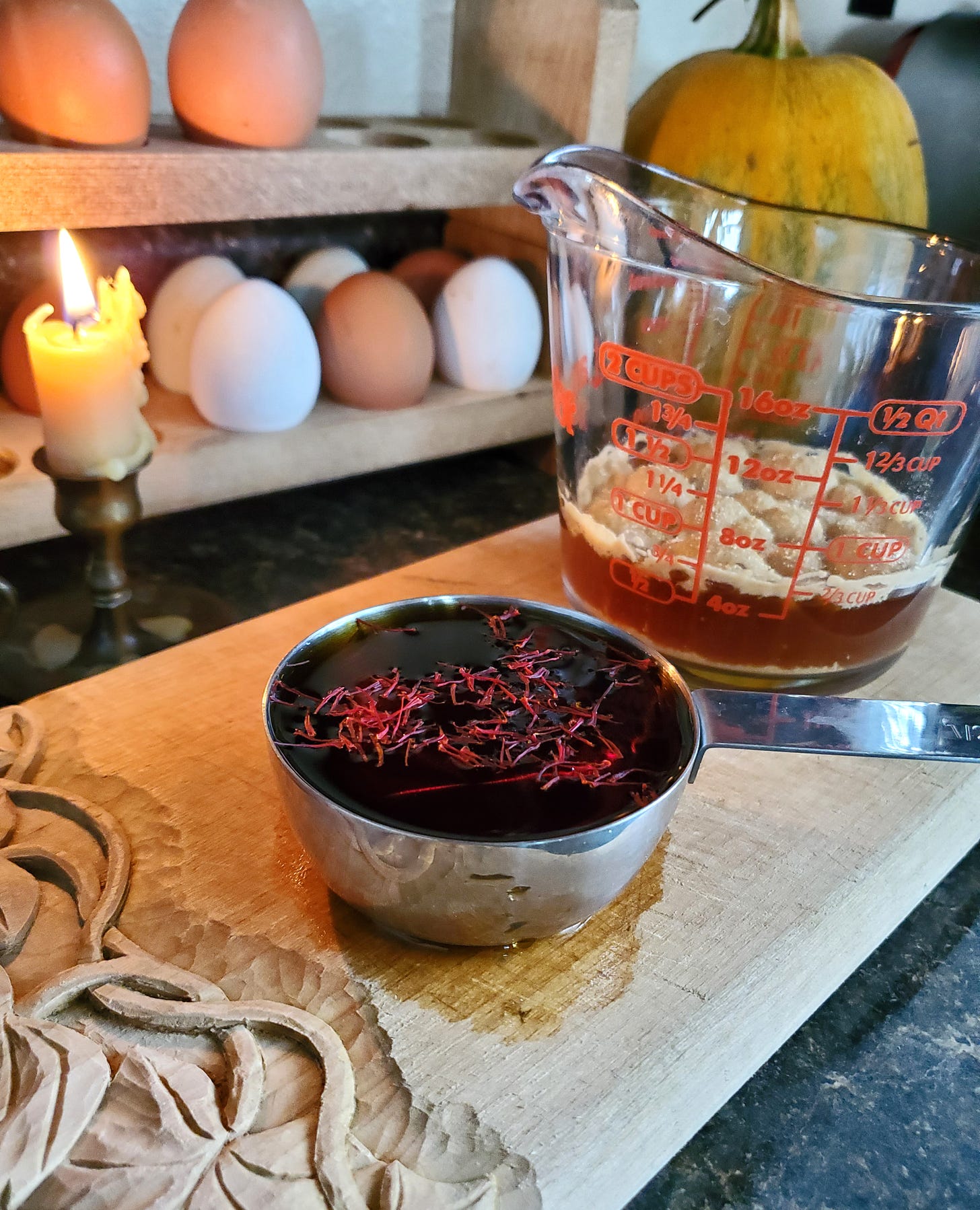

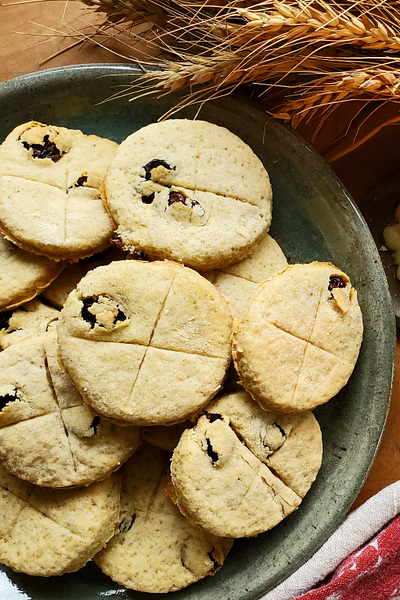
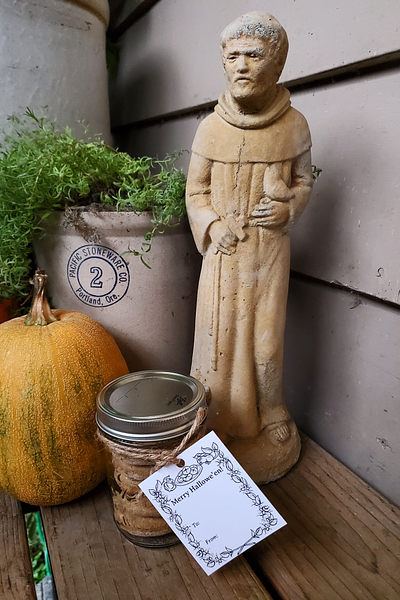
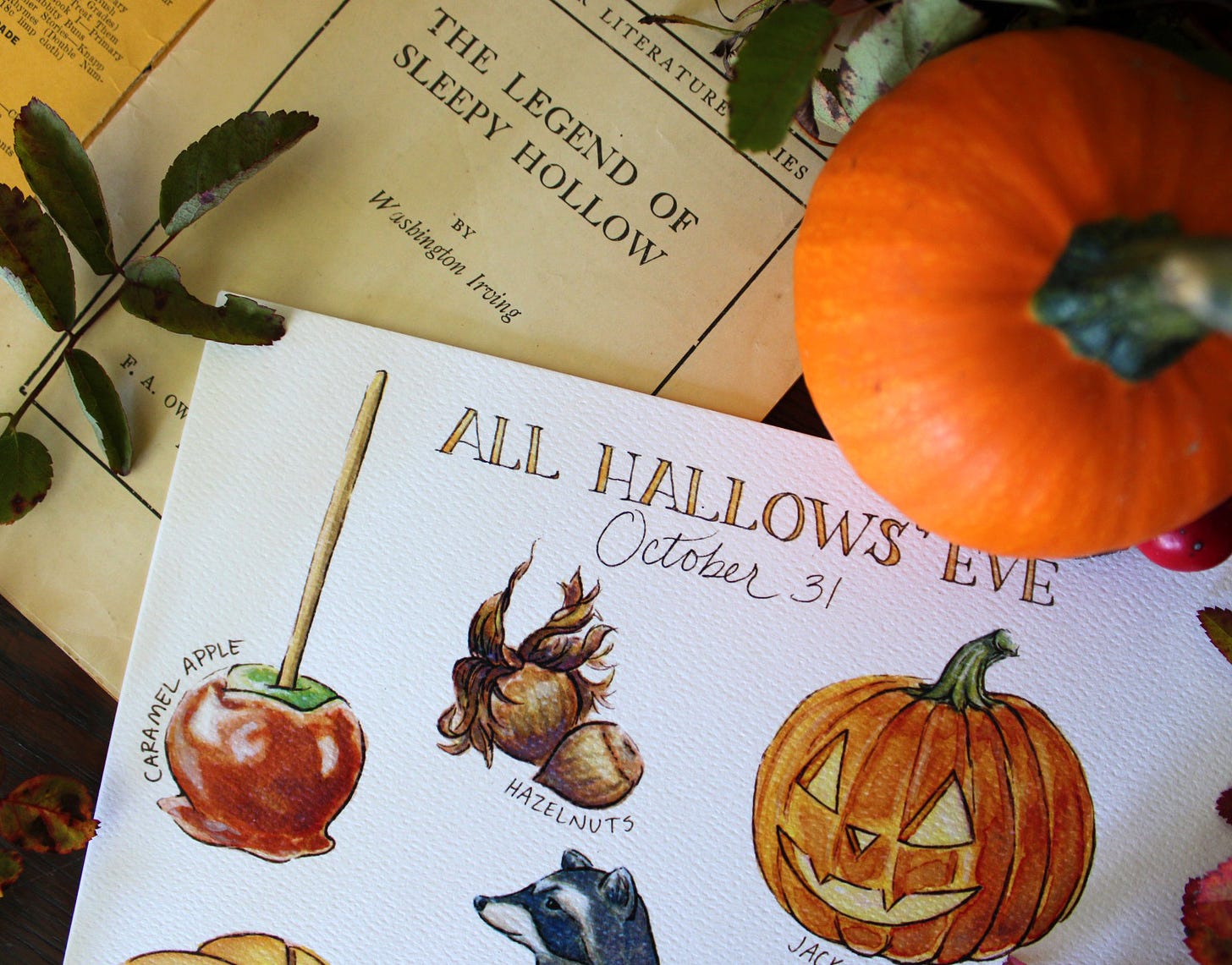

You light the Kale Torch, I'll grab the root veg lantern!!! :D I love this time of year, it makes me want to settle in by candle light and knit....there is something too about it that makes you reflect on the year- life and death- and muse on those deep things as we head towards Advent.
I love the deep and sacred atmosphere and purpose of Hallowtide. You do the feast justice with your thoughtful & informative post. I'm inspired by you to make kale & cabbage torches this year. Have you seen or made torches out of mullein stalks? Those are in the works here, too.